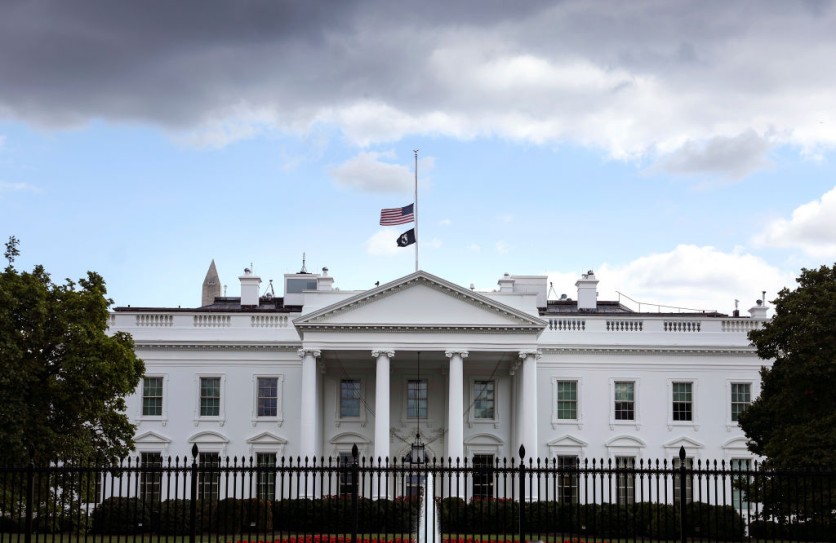A recent incident occurred when a caller falsely claimed that the White House was engulfed in flames, prompting an emergency response.

WASHINGTON, DC - SEPTEMBER 08: The American flag on top of the White House is lowered to half staff in memory of Queen Elizabeth II on September 08, 2022 in Washington, DC.
Triggering White House's Emergency Response
In a startling turn of events, a false 911 call reporting a fire at the White House set off a chain of emergency responses.
The Verge reported that the deceptive call, which claimed that the White House was ablaze with a person trapped inside, led to the immediate deployment of fire engines and other emergency vehicles to the complex.
This incident unfolded on a Monday morning when President Joe Biden and his family were away at Camp David. The response, initiated just after 7 a.m., involved District of Columbia Fire and Emergency Medical Services and U.S. Secret Service personnel rushing to the scene.
However, within minutes of their arrival, authorities determined that the report was a fabricated emergency, prompting the swift cancellation of the emergency response.
The incident underscores the potential consequences and risks associated with false emergency calls, emphasizing the need for robust measures to identify and address such deceptive activities promptly.
Upon contacting the number linked to the 911 report, the person on the other end denied making the call, indicating a high likelihood of it being a spoofed or falsified report.
President Biden is expected to return to the White House on Monday afternoon after a weekend spent at the presidential retreat in Maryland. During this time, he also participated in a service event in Philadelphia to observe Martin Luther King Jr. Day.
Despite the unsettling incident of the false 911 call, ABC News reported that the President remains committed to his duties and engagements.
The nature of the incident underscores the challenges posed by technology-driven deceptive practices, emphasizing the need for enhanced security measures in handling emergencies involving high-profile figures.
Other Politicians as Victims of Swatitng
In recent weeks, various political figures and members of the judiciary have found themselves entangled in swatting incidents, a troubling phenomenon that law enforcement experts attribute to the hostile political climate prevalent during a tense presidential election season.
Among the individuals reported to have experienced swatting are Rep. Marjorie Taylor Greene of Georgia, who disclosed being a target during the Christmas season; Boston Mayor Michelle Wu; Senator Rick Scott of Florida; and Maine Secretary of State Shenna Bellows.
Attorney General Merrick Garland addressed the rise in violent crime across the United States, highlighting the Department of Justice's dedication to investigating threats against FBI agents, federal judges, members of Congress, election workers, and other public servants.
Notably, he referred to a recent arrest on January 3 of a Florida man connected to threats against Representative Eric Swalwell and his children.
In acknowledging a positive decline in overall violent crime, CNBC reported that Garland expressed deep concern about the simultaneous increase in threats directed at those serving the public.
The FBI echoed this concern, emphasizing the serious implications of such threats and the potential risk to innocent individuals. Addressing and mitigating these threats has become a paramount priority for law enforcement agencies.
Related Article : White House Historical Association Is Set to Open Immersive Tech-Driven Educational Center





